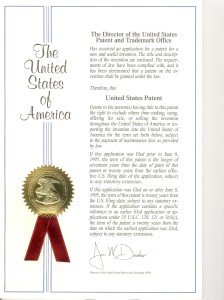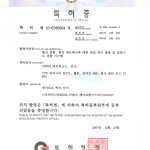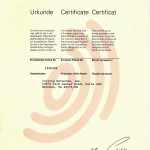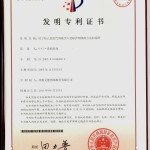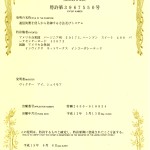Sheymov is the inventor of Variable Cyber Coordinates (VCC) method of communications. Variable Cyber Coordinates (VCC) is a method of network communications by which the cyber coordinates of the participating objects or entities are constantly changing. It provides an algorithmic foundation for the dynamic security of network devices against network-based cyber attacks.
Victor Sheymov’s United States patents : http://patft.uspto.gov/netacgi/nph-Parser?Sect1=PTO2&Sect2=HITOFF&p=1&u=%2Fnetahtml%2FPTO%2Fsearch?bool.html&r=0&f=S&l=50&TERM1= sheymov&FIELD1=INNM&co1=AND&TERM2=&FIELD2=&d=PTXT
See the United States patents relevant to cyber security that reference Victor Sheymov’s works by clicking here: http://patft.uspto.gov/netacgi/nph-Parser?Sect1=PTO2&Sect2=HITOFF&p=1u=%2Fnetahtml%2FPTO%2Fsearch-bool.html&r=0&f=S&l=50&TERM1=Sheymov&FIELD1=&co1=AND&TERM2=&FIELD2=&d=PTXT
Foreign patents records are often not centralized. These are examples of Victor Sheymov’s foreign patents in cyber security.
- V.Sheymov Korea patents
- V.Sheymov EU patents
- V.Sheymov India patent
- Victor Sheymov China patent
- Victor Sheymov patent Japan
Patents by Inventor Victor I. Sheymov
Victor I. Sheymov has filed for patents to protect the following inventions. This listing includes patent applications that are pending as well as patents that have already been granted by the United States Patent and Trademark Office (USPTO).
Publication number: 20100042513
Abstract: A method, system and computer readable medium for secure e-commerce communications, including an e-commerce system, including a private system for maintaining confidential information; and a public system for maintaining non-confidential information. The private system provides variable cyber coordinates to authorized parties for secure communications with the private system, and the public system provides cyber coordinates to the general public for communications with the public system.
Type: Application
Filed: February 10, 2009
Publication date: February 18, 2010
Applicant: Invicta Networks, Inc
Inventor: Victor I. Sheymov
Patent number: 7650502
Abstract: A method, system and computer readable medium for protecting a communications device connected to a communications system against an unauthorized intrusion, including providing a variable identifier to the communications device and entities authorized access thereto. The variable identifier is provided to a user address book and assigned with a permanent identifier and the permanent identifier, but not the variable identifier, is available to a user. The presence or absence of the correct variable identifier is sensed during an attempt to access the communications device for granting or denying access to the communications device. A new variable identifier is periodically provided to the communications device and to the authorized entities and to the user address book and assigned with the permanent identifier, wherein the permanent identifier, but not the new variable identifier, is available to the user.
Type: Grant
Filed: March 1, 2007
Date of Patent: January 19, 2010
Assignee: Invicta Networks, Inc.
Inventor: Victor I. Sheymov
Publication number: 20090320132
Abstract: By distributing various information and monitoring centers that monitor distributed networks and unauthorized access attempts, it is possible to, for example, more quickly defend against an unauthorized access attempts. For example, a Level 1 monitoring center could monitor a predetermined geographical area serving, for example, a wide variety of commercial and public sites, an organizational structure, or the like, for alarms. Upon analyzing an alarm for various characteristics, the Level 1 monitoring center can refer the unauthorized access attempt to an appropriate Level 2 center for, for example, possible retaliatory and/or legal action. Then, a Level 3 monitoring center can record and maintain an overall picture of the security of one or more networks, the plurality of monitoring centers and information about one or more hacking attempts.
Type: Application
Filed: August 11, 2009
Publication date: December 24, 2009
Applicant: INVICTA NETWORKS INC.
Inventors: Victor I. Sheymov, Roger B. Turner
Patent number: 7506166
Abstract: A method, system and computer readable medium for protecting a communications device connected to a communications system against an unauthorized intrusion, including providing a variable identifier to the communications device and entities authorized access thereto. The variable identifier is provided to a user address book and assigned with a permanent identifier and the permanent identifier, but not the variable identifier, is available to a user. The presence or absence of the correct variable identifier is sensed during an attempt to access the communications device for granting or denying access to the communications device. A new variable identifier is periodically provided to the communications device and to the authorized entities and to the user address book and assigned with the permanent identifier, wherein the permanent identifier, but not the new variable identifier, is available to the user.
Type: Grant
Filed: March 31, 2005
Date of Patent: March 17, 2009
Assignee: Invicta Networks, Inc.
Inventor: Victor I. Sheymov
Publication number: 20080307497
Abstract: A method, system, and device for secure communications are provided, including at least one of means for configuring two or more computer devices as a single computer device; and means for separating the two or more computer devices from one or more computer networks.
Type: Application
Filed: December 5, 2005
Publication date: December 11, 2008
Applicant: INVICTA NETWORKS, INC.
Inventor: Victor I. Sheymov
Publication number: 20080256624
Abstract: Through the use of an intermediate party, a first party is given the ability to communicate with a second party, with the communication appearing as if it originated with the intermediate party. Specifically, in a protected network system, the protected network is capable of acting as a conduit through which an entity, such as law enforcement, can communicate with an entity attempting an unauthorized access attempt unbeknownst to the entity attempting the unauthorized access attempt. This allows, for example, the detection and identification of the entity attempting the unauthorized access attempt.
Type: Application
Filed: June 23, 2008
Publication date: October 16, 2008
Applicant: Invicta Networks, Inc.
Inventors: Victor I. Sheymov, Roger B. Turner
Patent number: 7406713
Abstract: Through the use of an intermediate party, a first party is given the ability to communicate with a second party, with the communication appearing as if it originated with the intermediate party. Specifically, in a protected network system, the protected network is capable of acting as a conduit through which an entity, such as law enforcement, can communicate with an entity attempting an unauthorized access attempt unbeknownst to the entity attempting the unauthorized access attempt. This allows, for example, the detection and identification of the entity attempting the unauthorized access attempt.
Type: Grant
Filed: August 10, 2001
Date of Patent: July 29, 2008
Assignee: Invicta Networks, Inc.
Inventors: Victor I Sheymov, Roger B Turner
Patent number: 7236598
Abstract: A communications system and method is provided to reliably protect communication systems, such as mobile phone systems, from unauthorized use, as well as to make the interception of wireless communication more difficult. Specifically, the static wireless phone number or other similar identifiers are not used for identification and authorization during communication between the mobile unit and a base station. Instead, a set of private identifiers is determined and is known only to the phone company and the base stations controlling the mobile phone calls. These private identifiers allow dynamic and continual updating of the mobile phone and base station directories with current valid identifiers that are used for communication between the devices.
Type: Grant
Filed: May 23, 2001
Date of Patent: June 26, 2007
Assignee: Invicta Networks, Inc.
Inventors: Victor I Sheymov, Roger B Turner
Patent number: 7197563
Abstract: By distributing various information and monitoring centers that monitor distributed networks and unauthorized access attempts, it is possible to, for example, more quickly defend against an unauthorized access attempts. For example, a Level 1 monitoring center could monitor a predetermined geographical area serving, for example, a wide variety of commercial and public sites, an organizational structure, or the like, for alarms. Upon analyzing an alarm for various characteristics, the Level 1 monitoring center can refer the unauthorized access attempt to an appropriate Level 2 center for, for example, possible retaliatory and/or legal action. Then, a Level 3 monitoring center can record and maintain an overall picture of the security of one or more networks, the plurality of monitoring centers and information about one or more hacking attempts.
Type: Grant
Filed: July 21, 2006
Date of Patent: March 27, 2007
Assignee: Invicta Networks, Inc.
Inventors: Victor I. Sheymov, Roger B. Turner
Patent number: 7089303
Abstract: By distributing various information and monitoring centers that monitor distributed networks and unauthorized access attempts, it is possible to, for example, more quickly defend against an unauthorized access attempts. For example, a Level 1 monitoring center could monitor a predetermined geographical area serving, for example, a wide variety of commercial and public sites, an organizational structure, or the like, for alarms. Upon analyzing an alarm for various characteristics, the Level 1 monitoring center can refer the unauthorized access attempt to an appropriate Level 2 center for, for example, possible retaliatory and/or legal action. Then, a Level 3 monitoring center can record and maintain an overall picture of the security of one or more networks, the plurality of monitoring centers and information about one or more hacking attempts.
Type: Grant
Filed: May 31, 2001
Date of Patent: August 8, 2006
Assignee: INVICTA Networks, Inc.
Inventors: Victor I Sheymov, Roger B Turner
Patent number: 7010698
Abstract: A code inspection system produces a dynamic decoy machine that closely parallels one or more protected systems. The code inspection system can analyze and monitor one or more protected systems, and as those protected systems are updated, altered or modified, the dynamic decoy machine, in which potentially malicious code is tested, can also be updated. Thus, the dynamic decoy machine can accurately reflect the current state of the one or more protected systems such that the potentially destructive nature, if any, of suspicious code can be evaluated as if it were in the actual environment of the protected system, without jeopardizing the security of the protected system.
Type: Grant
Filed: February 14, 2002
Date of Patent: March 7, 2006
Assignee: Invicta Networks, Inc.
Inventor: Victor I. Sheymov
Patent number: 6981146
Abstract: The intrusion protection method and system for a communications network provides address agility wherein the cyber coordinates of a target host are changed both on a determined time schedule and when an intrusion attempt is detected. The system includes a management unit which generates a random sequence of cyber coordinates and maintains a series of tables containing the current and next set of cyber coordinates. These cyber coordinates are distributed to authorized users under an encryption process to prevent unauthorized access.
Type: Grant
Filed: May 15, 2000
Date of Patent: December 27, 2005
Assignee: INVICTA Networks, Inc.
Inventor: Victor I. Sheymov
Publication number: 20020116635
Abstract: A code inspection system produces a dynamic decoy machine that closely parallels one or more protected systems. The code inspection system can analyze and monitor one or more protected systems, and as those protected systems are updated, altered or modified, the dynamic decoy machine, in which potentially malicious code is tested, can also be updated. Thus, the dynamic decoy machine can accurately reflect the current state of the one or more protected systems such that the potentially destructive nature, if any, of suspicious code can be evaluated as if it were in the actual environment of the protected system, without jeopardizing the security of the protected system.
Type: Application
Filed: February 14, 2002
Publication date: August 22, 2002
Applicant: INVICTA NETWORKS, INC.
Inventor: Victor I. Sheymov
Publication number: 20020023227
Abstract: Through the use of an intermediate party, a first party is given the ability to communicate with a second party, with the communication appearing as if it originated with the intermediate party. Specifically, in a protected network system, the protected network is capable of acting as a conduit through which an entity, such as law enforcement, can communicate with an entity attempting an unauthorized access attempt unbeknownst to the entity attempting the unauthorized access attempt. This allows, for example, the detection and identification of the entity attempting the unauthorized access attempt.
Type: Application
Filed: August 10, 2001
Publication date: February 21, 2002
Inventors: Victor I. Sheymov, Roger B. Turner
Publication number: 20010052014
Abstract: By distributing various information and monitoring centers that monitor distributed networks and unauthorized access attempts, it is possible to, for example, more quickly defend against an unauthorized access attempts. For example, a Level 1 monitoring center could monitor a predetermined geographical area serving, for example, a wide variety of commercial and public sites, an organizational structure, or the like, for alarms. Upon analyzing an alarm for various characteristics, the Level 1 monitoring center can refer the unauthorized access attempt to an appropriate Level 2 center for, for example, possible retaliatory and/or legal action. Then, a Level 3 monitoring center can record and maintain an overall picture of the security of one or more networks, the plurality of monitoring centers and information about one or more hacking attempts.
Type: Application
Filed: May 31, 2001
Publication date: December 13, 2001
Inventors: Victor I. Sheymov, Roger B. Turner
Publication number: 20010048745
Abstract: A communications system and method is provided to reliably protect communication systems, such as mobile phone systems, from unauthorized use, as well as to make the interception of wireless communication more difficult. Specifically, the static wireless phone number or other similar identifiers are not used for identification and authorization during communication between the mobile unit and a base station. Instead, a set of private identifiers is determined and is known only to the phone company and the base stations controlling the mobile phone calls. These private identifiers allow dynamic and continual updating of the mobile phone and base station directories with current valid identifiers that are used for communication between the devices.
